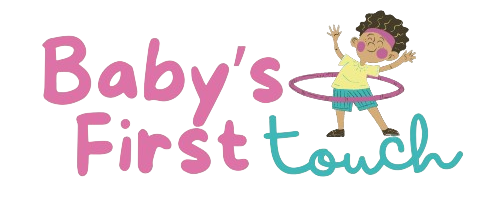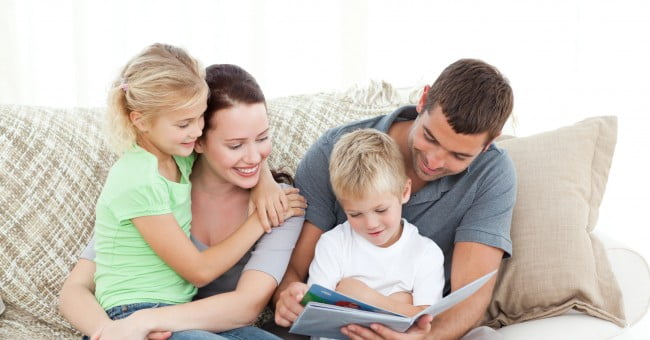Table of Contents
Unlocking Success Together: How Play Activities Forge Unbeatable Teamwork Skills
Ever watched a group of kids spontaneously build an epic fort, or seen a sports team execute a perfect play? There’s a kind of magic in that synergy, isn’t there? That magic is teamwork, and it’s not just for the playground or the playing field. In our interconnected world, whether you’re navigating school projects, office collaborations, or even family life, the ability to work effectively with others is more crucial than ever. But how do we *really* develop these vital skills? Forget dry lectures and awkward icebreakers. The secret might just lie in something far more intuitive and enjoyable: play.
That’s right! Engaging, fun, and seemingly simple play activities are incredibly powerful tools for building communication, trust, problem-solving abilities, and all the other ingredients that make a group truly click. This article dives deep into the world of collaborative play, exploring why it works and providing a treasure trove of practical activities you can use to foster killer teamwork skills in children, teens, and adults alike. Get ready to unleash the power of play!
Why Play is Your Secret Weapon for Building Strong Teams
Think about it: when we play, we’re often more relaxed, open, and willing to experiment. This creates the perfect breeding ground for developing complex social skills without the pressure of formal learning environments.
The Science Behind Playful Learning
Neuroscience tells us that play isn’t just frivolous fun; it’s fundamental to learning and development. Play activates brain regions associated with pleasure, motivation, and cognitive flexibility. When we’re engaged in enjoyable activities, our brains release dopamine, which enhances memory and learning. In a group setting, shared positive experiences during play also release oxytocin, often called the “bonding hormone,” which strengthens social connections and trust among participants.
A Low-Stakes Training Ground
Trying to negotiate roles during a high-pressure work project can be stressful. Messing up a step in a silly group game? Not so much. Play provides a safe space to practice essential teamwork skills like communication, negotiation, and conflict resolution. Mistakes become learning opportunities rather than failures, encouraging participants to take risks and try new approaches they might shy away from in more serious contexts.
Naturally Fostering Connection
Team building games and activities naturally require interaction. To succeed in a group challenge, participants *must* communicate, listen to each other’s ideas, share resources, and coordinate their actions. This organic process builds rapport and understanding far more effectively than forced interactions. Shared laughter and overcoming a fun challenge together create positive memories and strengthen interpersonal bonds.
Breaking Down Barriers
Hierarchies and pre-conceived notions can melt away during play. The boss might become just another team member trying to build the tallest spaghetti tower, or the quiet student might reveal unexpected leadership qualities during a scavenger hunt. Play levels the playing field, allowing individuals to connect on a more human level and appreciate diverse perspectives and strengths within the group.
The Core Teamwork Skills Nurtured Through Play
Okay, so play is great for bonding, but what specific teamwork skills does it actually develop? Let’s break down the key competencies that get a serious boost from well-chosen group activities.
Communication: The Foundation Stone
Effective teamwork hinges on clear communication. Play activities provide endless opportunities to practice:
- Active Listening: Really hearing and understanding what others are saying to achieve a common goal (e.g., following instructions in ‘Simon Says’ variations, piecing together clues in a scavenger hunt).
- Clear Articulation: Expressing ideas, instructions, and feedback concisely and effectively (e.g., explaining a strategy for a game, describing an object for others to guess).
- Non-Verbal Cues: Reading body language, facial expressions, and tone of voice, which are often crucial in collaborative settings (e.g., navigating a ‘minefield’ blindfolded with only verbal guidance).
- Giving & Receiving Feedback: Learning to offer constructive comments and accept suggestions gracefully during the activity.
Collaboration & Cooperation: Working as One
This is the heart of teamwork – individuals combining their efforts towards a shared objective. Play excels at teaching:
- Shared Goals: Understanding and committing to the group’s objective over individual ambitions (e.g., building one structure together, solving one puzzle as a team).
- Sharing Resources & Responsibilities: Learning to distribute tasks and materials fairly and efficiently (e.g., sharing building blocks, delegating roles in a skit).
- Supporting Teammates: Encouraging others, offering help, and celebrating collective success (e.g., cheering for teammates during an obstacle course, helping someone who’s stuck).
- Negotiation & Compromise: Finding mutually agreeable solutions when ideas differ (e.g., deciding on a team name, agreeing on a strategy for a challenge).
Problem-Solving: Thinking Together
Many play activities present groups with challenges that require collective brainpower. This develops:
- Analyzing Situations: Collectively assessing the problem or task at hand (e.g., figuring out the rules of a new game, understanding the constraints of a building challenge).
- Brainstorming Solutions: Generating multiple ideas and approaches as a group (e.g., thinking of ways to cross a ‘river’ with limited materials).
- Critical Thinking: Evaluating the pros and cons of different ideas (e.g., deciding which clue to follow next in a hunt).
- Collective Decision-Making: Reaching a consensus on the best course of action (e.g., agreeing on the final design for a team poster).
Trust & Respect: The Social Glue
You can’t have effective teamwork without mutual trust and respect. Play helps build:
- Reliability: Learning to count on others to fulfill their roles and responsibilities (e.g., trusting your partner to guide you correctly when blindfolded).
- Valuing Diversity: Recognizing that different people bring unique skills and perspectives that benefit the team (e.g., appreciating the artistic person’s contribution to a banner, or the logical person’s strategy in a puzzle).
- Psychological Safety: Creating an environment where individuals feel comfortable sharing ideas and taking risks without fear of judgment (fostered by the low-stakes nature of play).
- Constructive Conflict Resolution: Learning to handle disagreements respectfully and find common ground (often arises naturally during competitive or complex games).
Leadership & Followership: Understanding Roles
Effective teams need both leaders and supportive followers. Play allows individuals to experiment with:
- Taking Initiative: Stepping up to suggest ideas, organize efforts, or guide the group.
- Delegation: Assigning tasks effectively based on team members’ strengths.
- Supporting Leadership: Actively participating and contributing even when not in a formal leadership role.
- Flexibility in Roles: Understanding that leadership can be fluid and shift depending on the task or situation.
Awesome Play Activities for Developing Teamwork (By Age Group)
The best play activities for teamwork are tailored to the participants’ age, abilities, and the specific skills you want to foster. Here are some ideas across different age groups:
For Young Children (Ages 4-7): Focus on Sharing & Taking Turns
At this age, the focus is on basic cooperation, sharing, communication, and understanding group goals.
- Parachute Play: Classic and effective! Activities like making waves, mushroom (lifting it high), or rolling balls on top require coordinated effort and communication.
- Group Mural Painting: Tape a large sheet of paper to the wall or floor. Provide paints and brushes, and let the children create a single masterpiece together. Encourages sharing space and materials.
- Cooperative Block Building: Challenge the group to build the tallest tower or longest wall together using blocks. Simple rules, shared goal.
- ‘Follow the Leader’ Variations: One child leads, others follow. Introduce variations where the leader role rotates, or where the group has to move together like a ‘caterpillar’.
- Group Storytelling Circle: One person starts a story with a sentence, and each child adds the next sentence, building a collaborative narrative.

For Older Children & Pre-Teens (Ages 8-12): Strategy & Role Assignment
Kids in this age group can handle more complex rules, strategic thinking, and defined roles within a team.
- Scavenger Hunts with Clues: Create clues that require teamwork to decipher or find. The final prize is shared by the winning team(s). Emphasizes problem-solving and communication.
- Group Obstacle Courses: Design a course that requires team members to help each other (e.g., one person guides a blindfolded partner, teams have to carry an object together). Focuses on cooperation and physical coordination.
- Build a Bridge/Tower Challenge: Provide limited materials (e.g., straws, tape, paper clips, spaghetti, marshmallows) and challenge teams to build the strongest bridge or tallest freestanding tower. Requires planning, collaboration, and resource management.
- Team Sports (Simplified & Fun): Focus on participation and cooperation rather than winning. Think variations of kickball, capture the flag, or relay races where teamwork is essential.
- Group Jigsaw Puzzles: Give each team a moderately complex jigsaw puzzle to complete within a time limit. Requires coordination and spatial reasoning.
For Teenagers (Ages 13-18): Communication, Strategy & Conflict Resolution
Teens can engage in more sophisticated activities focusing on complex communication, strategic planning, leadership, and navigating disagreements.
- Escape Room Challenges (DIY or Commercial): These are fantastic for immersive problem-solving, communication under pressure, and role delegation. You can find kits online or design your own.
- Human Knot: A classic quick team builder. A group stands in a circle, reaches across to grab hands with two different people, then works together to untangle the ‘knot’ without letting go. Requires patience and clear communication.
- Team Debates or Presentations (Gamified): Assign teams a fun or thought-provoking topic to research and present. Make it a game by having peer judging based on collaboration and clarity. Develops research, communication, and persuasion skills.
- Geocaching Teams: Using GPS devices or apps, teams navigate to find hidden containers (geocaches). Encourages navigation skills, planning, and collaborative searching.
- Minefield Crossing: Scatter ‘mines’ (cones, paper plates) across an area. One team member at a time is blindfolded and must cross the area guided only by the verbal instructions of their teammates. Builds trust and precise communication.

For Adults (Workplace & Social Groups): Communication, Trust & Innovation
Adult activities can directly target workplace dynamics or simply build social bonds, focusing on sophisticated communication, trust-building, problem-solving, and fostering creativity.
- Two Truths and a Lie (Team Version): Individuals share three ‘facts’ (two true, one false). The team works together to guess the lie. A great icebreaker that encourages listening and deduction.
- Office Trivia (Team-Based): Organize a trivia game with diverse categories. Teams must collaborate to pool their knowledge. Fun, competitive, and highlights diverse expertise.
- Collaborative Problem-Solving Scenarios: Present teams with hypothetical challenges (e.g., ‘Desert Island Survival’, ‘Plan a Project Launch with X Constraints’). They must work together to devise a plan. Focuses on strategy, resource allocation, and decision-making.
- Volunteer Day as a Team: Working together for a good cause builds camaraderie, shared purpose, and positive associations outside the usual environment.
- Blind Drawing: One person describes an object or image, while their partner (back-to-back or blindfolded) tries to draw it based solely on the description. Hilarious and highlights the challenges of clear communication.

Making Play Activities Truly Effective for Teamwork Development
Just throwing a game at a group isn’t enough. To maximize the teamwork-building potential of play, consider these crucial elements:
Set Clear Goals (Even Simple Ones)
Before starting, have an idea of what you want the group to achieve or practice. Is the focus on communication? Problem-solving? Getting to know each other? Briefly mentioning the goal (e.g., “Let’s see how well we can communicate to build this tower!”) helps participants understand the underlying purpose.
Choose the Right Activity
Consider:
- Age and Ability Level: Ensure the challenge is appropriate – not too easy, not frustratingly hard.
- Group Size: Some activities work better with small groups, others with larger ones.
- Time & Space Available: Be realistic about your constraints.
- Desired Skills: Match the activity to the specific teamwork skills you want to develop (e.g., choose a puzzle for problem-solving, a blindfolded activity for trust and communication).
- Group Dynamics: Is the group new? Are there existing conflicts? Choose activities that suit the current social landscape.
Facilitation is Key
Your role as a facilitator (whether you’re a teacher, manager, parent, or friend) is important. This involves:
- Explaining Rules Clearly: Ensure everyone understands the task.
- Encouraging Participation: Gently draw in quieter members.
- Observing Dynamics: Notice how the team interacts – who leads? Who communicates well? Are there conflicts?
- Guiding, Not Controlling: Let the team figure things out, but offer hints or ask guiding questions if they’re truly stuck or heading towards unproductive conflict.
- Managing Time: Keep the activity on track.
Debriefing and Reflection: The MOST Important Step!
This is where the real learning gets cemented. After the activity, take a few minutes to discuss the experience. Ask open-ended questions like:
- “What worked well for your team during that activity?”
- “What challenges did you face?”
- “How did you communicate? Was it effective?”
- “What did you learn about working together?”
- “How could we apply what we learned today to our usual projects/interactions?”
- “What role did each person play?”
This reflection helps participants connect the fun of the game to the serious skills they were practicing and consider how to apply them in real-world situations.
Keep it FUN!
Remember, it’s called play for a reason! If the activity feels like a chore or overly competitive to the point of stress, it loses its effectiveness. Foster a positive, supportive atmosphere where laughter is encouraged, and the focus is on the process of working together, not just winning.
Conclusion: Play Your Way to Better Teamwork
Teamwork isn’t an innate talent; it’s a collection of skills that can be learned, practiced, and honed. And one of the most effective, engaging, and universally accessible ways to do this is through the power of play.
From simple sharing games for toddlers to complex strategic challenges for adults, play activities provide a dynamic and low-stakes environment to cultivate essential skills like communication, collaboration, problem-solving, and trust. By carefully selecting activities, facilitating effectively, and prioritizing reflection, we can transform seemingly simple games into powerful learning experiences.
So, whether you’re looking to build a more cohesive team at work, help your children develop crucial social skills, or simply strengthen bonds within a community group, don’t underestimate the impact of incorporating purposeful play. It’s time to get out there, have some fun, and watch those teamwork skills flourish!




